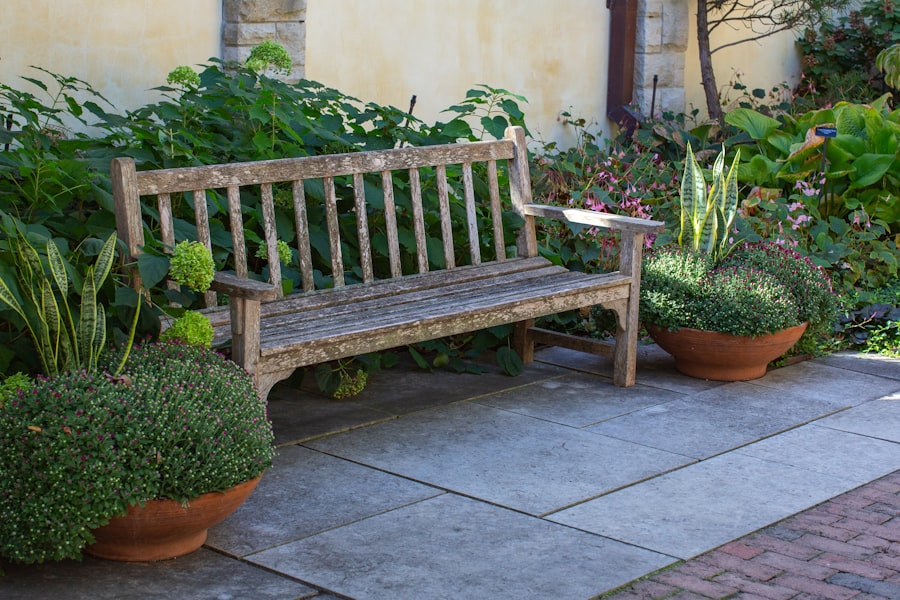As I delve into the world of Taoist meditation, I find myself captivated by its rich history and profound philosophy. Rooted in ancient Chinese traditions, Taoism emphasizes living in harmony with the Tao, or the fundamental nature of the universe. This practice is not merely a technique for relaxation; it is a holistic approach to life that encourages me to align my inner self with the rhythms of nature.
Through meditation, I seek to cultivate a deeper understanding of my place in the cosmos and to foster a sense of unity with all living beings. Taoist meditation is often characterized by its emphasis on stillness and simplicity. Unlike some forms of meditation that may focus on intense concentration or visualization, Taoist practices invite me to embrace a more effortless state of being.
I am encouraged to let go of my thoughts and distractions, allowing my mind to settle like a calm pond reflecting the sky. This gentle approach resonates with me, as it aligns with the Taoist belief that true wisdom arises from stillness and observation rather than forceful striving.
Key Takeaways
- Taoist meditation focuses on quieting the mind and cultivating inner peace through various techniques and principles.
- The principles of Taoist meditation include simplicity, naturalness, and spontaneity, emphasizing the importance of being in harmony with the flow of life.
- Techniques for Taoist meditation include visualization, breath control, and gentle movement to help practitioners find their center and cultivate mindfulness.
- Mindfulness in Taoist meditation involves embracing the present moment and letting go of attachments to thoughts and emotions, allowing for a deeper sense of peace and clarity.
- The role of breath in Taoist meditation is crucial, as it is seen as a bridge between the body and the mind, helping to regulate energy and promote relaxation.
The Principles of Taoist Meditation
Embracing Wu Wei: The Power of Non-Action
One of the most fundamental principles is the concept of wu wei, or “non-action.” This principle teaches me that sometimes the best way to achieve my goals is to step back and allow things to unfold naturally. In meditation, this translates to letting go of my expectations and judgments, creating space for a more authentic experience.
Balancing Yin and Yang: Harmony Within
Another essential principle is the idea of yin and yang, which represents the duality inherent in all things. In my meditation practice, I strive to balance these opposing forces within myself. I explore the interplay between stillness and movement, light and dark, and activity and rest. This balance fosters a sense of harmony within me, allowing me to navigate life’s challenges with greater ease.
Cultivating Wholeness Through Integration
By acknowledging and integrating both aspects of my being, I cultivate a more profound sense of wholeness. Through this integration, I learn to trust the process and recognize that my journey is as important as any destination.
Finding Your Center: Techniques for Taoist Meditation

As I embark on my journey into Taoist meditation, I discover various techniques that help me find my center. One of the most accessible methods is seated meditation, where I sit comfortably with my back straight and my hands resting on my knees or in my lap. I close my eyes and take a few deep breaths, allowing my body to relax while focusing on the sensations within me.
This simple practice serves as a foundation for deeper exploration, helping me cultivate awareness of my thoughts and emotions without becoming attached to them. Another technique that resonates with me is the practice of qigong, which combines movement, breath, and meditation. Through gentle, flowing movements, I connect with my body’s energy and cultivate a sense of vitality.
As I engage in qigong, I become more attuned to the rhythms of my breath and the sensations within my body. This dynamic form of meditation allows me to release tension and cultivate a sense of flow, making it an invaluable addition to my daily practice.
Embracing the Present Moment: Mindfulness in Taoist Meditation
Incorporating mindfulness into my Taoist meditation practice has been transformative. Mindfulness encourages me to fully engage with the present moment, allowing me to experience life as it unfolds without judgment or distraction. As I sit in meditation, I focus on the sensations in my body—the feeling of the ground beneath me, the rhythm of my breath, and the sounds around me.
This heightened awareness helps me cultivate a sense of gratitude for each moment, reminding me that life is a series of fleeting experiences. Through mindfulness, I also learn to observe my thoughts without becoming entangled in them. Instead of trying to suppress or control my thoughts, I acknowledge their presence and let them drift away like clouds passing through the sky.
This practice fosters a sense of detachment and clarity, allowing me to respond to life’s challenges with greater equanimity. By embracing the present moment, I cultivate a deeper connection with myself and the world around me.
The Role of Breath in Taoist Meditation
Breath plays a central role in my Taoist meditation practice, serving as both an anchor and a source of energy. As I settle into meditation, I focus on my breath—its natural rhythm and flow. With each inhalation, I visualize drawing in vital energy from the universe, while each exhalation allows me to release tension and negativity.
This conscious awareness of breath helps me cultivate a sense of calm and presence. In addition to its calming effects, breath also serves as a bridge between my mind and body. By synchronizing my breath with gentle movements or visualizations, I deepen my connection to my inner self.
For instance, during qigong practice, I coordinate specific movements with inhalations and exhalations, creating a harmonious flow that enhances my overall experience. This integration of breath into my meditation practice not only promotes relaxation but also revitalizes my spirit.
Cultivating Inner Peace and Harmony through Taoist Meditation

Connecting with My True Self
The stillness I experience during meditation allows me to connect with my true self—a place free from external pressures and expectations. In this sacred space, I can reflect on my thoughts and emotions without judgment, fostering self-acceptance and compassion.
Embracing Interconnectedness
Moreover, Taoist meditation encourages me to embrace the interconnectedness of all beings. As I meditate on the concept of unity with nature, I develop a deeper appreciation for the world around me. This awareness fosters empathy and compassion for others, reminding me that we are all part of a larger tapestry of existence.
Contributing to a Harmonious World
By cultivating inner peace within myself, I contribute to a more harmonious world. Through Taoist meditation, I am reminded that my individual journey towards inner peace has a ripple effect, promoting a more compassionate and peaceful world for all.
Overcoming Challenges in Taoist Meditation
Despite its many benefits, I have encountered challenges along my Taoist meditation journey. One common obstacle is restlessness—my mind often races with thoughts and distractions that pull me away from the present moment. When this happens, I remind myself that it is natural for thoughts to arise during meditation; instead of resisting them, I gently acknowledge their presence and return my focus to my breath or body sensations.
Another challenge I’ve faced is maintaining consistency in my practice. Life’s demands can easily disrupt my routine, leading to periods where I neglect meditation altogether. To overcome this hurdle, I’ve learned to approach meditation with flexibility and compassion.
Rather than viewing it as an obligation, I remind myself that even short moments of mindfulness can be beneficial. By integrating meditation into daily activities—such as mindful walking or breathing exercises—I can maintain a connection to my practice even during busy times.
Integrating Taoist Meditation into Daily Life
As I deepen my understanding of Taoist meditation, I find ways to integrate its principles into my daily life. One powerful method is through mindful living—approaching each moment with awareness and intention. Whether I’m eating a meal or engaging in conversation, I strive to be fully present in those experiences.
This shift in perspective transforms mundane activities into opportunities for mindfulness and connection. Additionally, I’ve discovered that nature serves as an essential teacher in my journey toward integration. Spending time outdoors allows me to reconnect with the rhythms of the natural world—a core tenet of Taoism.
Whether I’m taking a walk in the park or simply sitting under a tree, I immerse myself in the beauty around me. These moments remind me of the interconnectedness of all life and inspire gratitude for each experience. In conclusion, embracing Taoist meditation has enriched my life in countless ways.
Through understanding its principles and techniques, I’ve cultivated inner peace and harmony while learning to navigate life’s challenges with grace. By integrating mindfulness into daily life and honoring the role of breath in my practice, I’ve deepened my connection to myself and the world around me. As I continue this journey, I remain open to new insights and experiences that will further enhance my understanding of Taoism and its transformative power.









Add Comment